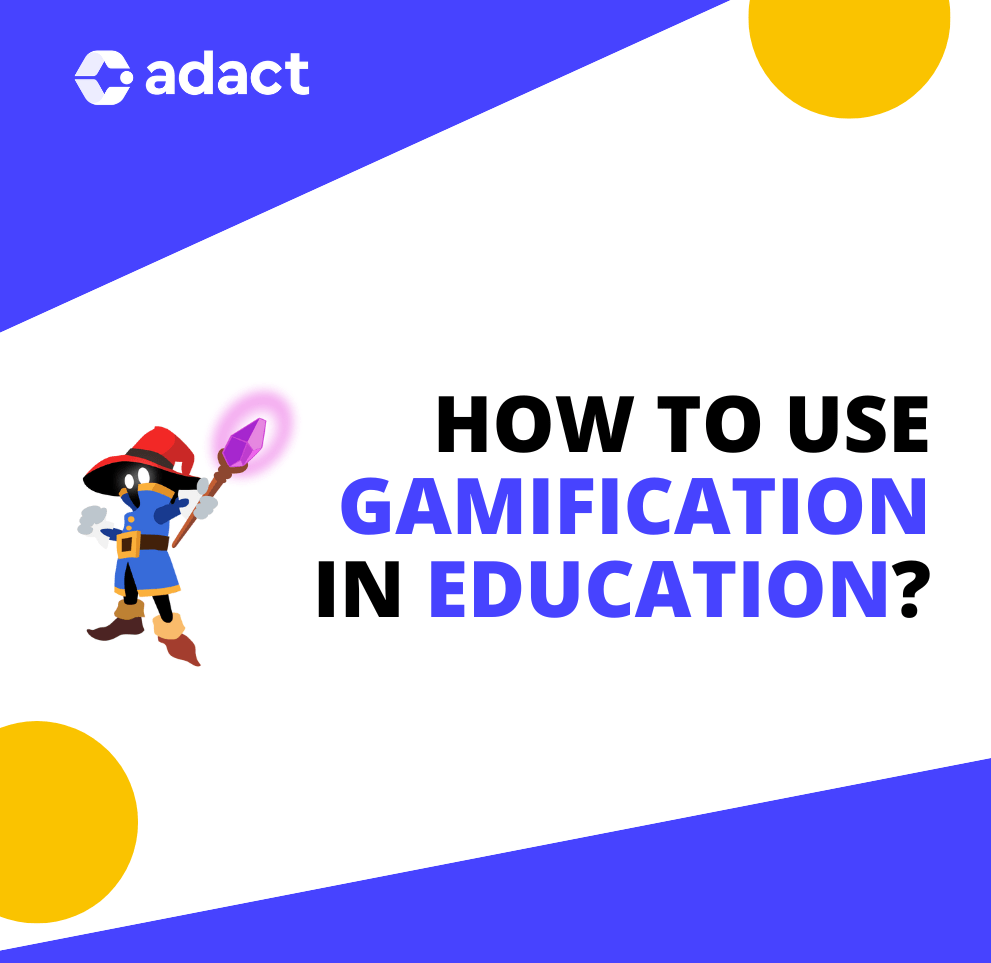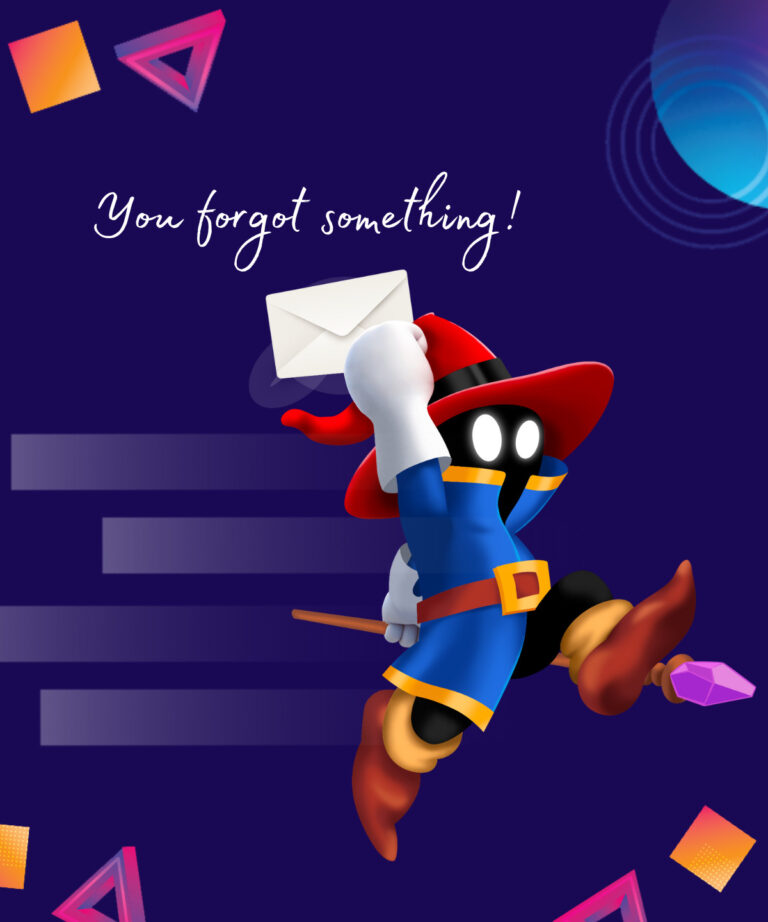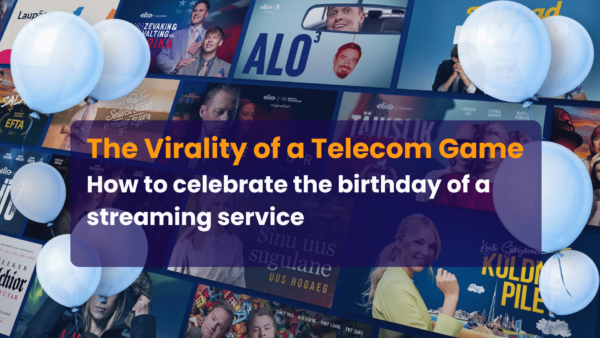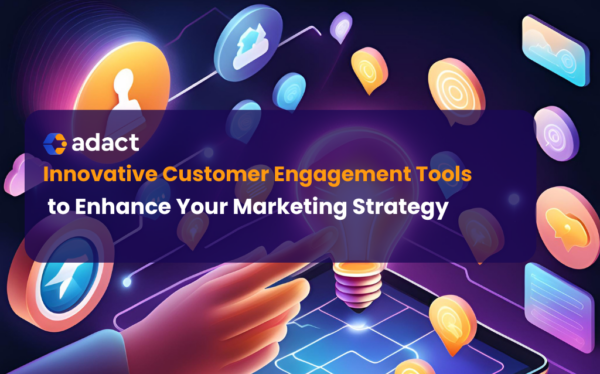Contemporary scientists believe that people learn best when they are also having fun. The use of gamification in education and business is growing as more firms understand the benefits.
Imagine scoring points or unlocking achievements at school or work for using your full potential and creativity to do the task at hand.
Well, that’s the idea of gamification, a trend that is transforming our lives by changing the way we do things. But before we talk about that, let’s start with the basics.

What is Gamification❓
Gamification is the adaptation of game-related characteristics. Particularly those linked with user experience and engagement, to non-game situations such as education. Using in-game ideas and themes (gaining prizes, points for completing different tasks) gives the student joy and motivation.
Did you know that the word “gamification” was first mentioned in 2003? In recent years applications in non-game environments have increased significantly.
In fact,
- The gamification market is expected to reach $96.8 billion by 2030 (Precedence Research, 2022).
- Applying challenge-based gamification increases student performance and motivation (Springer, 2023).
- Students who experienced gamification in education performed 89.45% better than their peers that didn’t experience gamification (ScienceDirect, 2020).
As you can tell, the adoption of gamification for educational purposes is growing. The use of game mechanics such as rewards, points, levels or ranks has been shown to boost the motivation and commitment of students and teachers.
But, with technology always evolving, is gamification adjusting to meet the changing demands of modern learners?
We have summed up the latest trends of Gamification in education in 2023 in this article. So let us dive in without further ado.
Gamification in education ✏️
Gamification in education has recently been a hot topic, according to how modern classrooms may benefit from a learning system based on rewards and improvements. The concept of incorporating gamification into learning has always existed as “gamified learning” at times, but it had not received much attention until the recent pandemic times.
As a result, universities and institutions all around the world were forced to rely on remote learning, affecting a large number of students. However, the lack of student involvement in online classrooms has raised worries among lecturers, prompting the need of implementing gamification in education. (Ariya Pakinee, 2021 Feb)
The education sector is one of the markets that has embraced gamification with its arms wide open.
Gamification in Education in 2023: Microlearning
Microlearning emphasizes attaining knowledge through small chunks of information used to meet a specific learning objective. You can form these small pieces into videos, articles, eBooks, audio clips, or some other type of content adequately focused to meet an immediate need.
Micro-learning experiences are concise, engaging, effective, and visually beautiful ways to learn. The different types of microlearning include mobile-friendly quizzing, concentrated (3–5 minute) educational videos, and so on. Regardless of form, the goal is to provide the maximum educational benefit with a minimum time commitment on any particular topic.
In 2023, there is a growing number of educational sectors that have ditched the old patterns, and content development methods. Now they are switched to creating beautiful, proficient learning experiences for the present learners through micro-learning.
And as technology and accessibility further improve, we can expect the whole world to go micro-learning crazy. Educational institutes worldwide should put their resources into micro-learning to empower their learners to learn anyplace, anytime. While micro-learning experiences are exceptionally modular with each module targeted to meet a specific learning objective, multiple modules can be woven together or improved on a case-by-case basis to meet the broader learning or course objectives.
Gamification in education: Benefits
Here are the benefits of gamifying learning experiences:
Increased engagement
Educators can incorporate game-based elements like points, badges, rewards and leaderboards to make educational tasks more appealing and enjoyable. As a result, it leads to higher student engagement and participation in an educational environment.
Intrinsic reward and motivation
Gamification taps into different types of human motivation. The approach focuses on the inherent desire for competition, recognition and achievement. These aspects are a part of intrinsic motivation that encourage students to progress and improve educational performance.
Skill development and enhanced learning
When adopted within an educational context, gamification helps make learning interactive and immersive. The higher students are engaged in learning, the faster they develop skills. In such a case, gamification in education is a direct path toward enhanced learning.
Higher collaboration

Gamification in education comes in different forms. There can be games for individual players as well as teams. When exposed to educational games, students often need to team up to complete tasks. This particular aspect boosts collaboration and introduces the power of extrinsic motivation. Seeking group rewards is an excellent path toward higher team collaboration.
Real-time feedback
Gamification in education is beneficial for both learners and educators. While students improve their skills and enhance their learning capabilities, educators get feedback and insights from game users. You can use it to improve learning and set more personalized student goals.
Gamification in education in 2023: gamified educational apps
The use of mobile applications used as learning and teaching tools in Higher Education isn’t new. However, the ongoing interests of lecturers, learning designers, and stakeholders in gamified mobile apps to enhance learning and improve student outcomes have made them a must-have approach in education.
Educational institutes should integrate gamification through mobile apps in 2023. It’s a perfect way to make the acquisition of knowledge easier, evaluate in-class learning to provide immediate feedback and improve students’ engagement. The educational gamification apps allow you to keep all educational content small for the students to consume it conveniently.
Gamification in Education in 2023: chatbots
The word chatbot may be seen as common because chatbots are quite often used in our digital environments. Any individual who has a digital voice assistant in their home or classroom has a chatbot, and a considerable lot of the websites we access routinely use text-based chatbots to interact with their customers.

With the continued advancement of Artificial intelligence in Education, advances in education, the possible uses for chatbots in education have also increased. A fascinating example of chatbots use in education is a Quizbot. The Quizbot, represented as Frosty the penguin, gamifies the learning process as a fun test. Depending upon the student’s advantage and subjects, Frosty will pose different inquiries and praise the student for each correct answer. A study was conducted to check the chatbot’s competence, and it was discovered that students facilitated with Quizbot burned through 2.6 times longer studying than students provided with a flashcard app. Students using Quizbot also gave correct answers most of the time.
Chatbots can be utilized to implement Gamification in education for their benefits of accurate information, serving multiple students simultaneously, and providing a personalized outreach to each student.
Gamification in education in 2023: avatars
Often games provide players with an avatar. That’s kind of self-representation in the game that the other players can see and compete against. These avatars can be abstract symbols or 3D representations of the player’s character in the game. In any case, avatars are designed in a way to allow an element of personal expression and creativity.
Some more elements of social customization include usernames, handles, or tags by which they will be identified in the game.
The advantages of this type of gamification are fundamentally social. In the context of education, gamification of this type allows students to extend a profile of themselves, complete with significant scholarly achievements, to other students and the rest of the world. It also helps students to explore different avenues regarding various types of identity and approach their examinations from alternate points of view.
Gamification in education in 2023: immersive e-learning with AR/VR
Imagine integrating augmented reality/virtual reality with e-learning. Although it might appear as we are talking about the distant future, the fact is that from 2021 and onwards, the use of virtual and augmented reality components will become a must-have tactic in education to improve user experience and take gamification to a whole new level.
Games are fun and they often keep the player on edge to complete a milestone. They keep players engaged and roused for progress. Gamified learning takes these intriguing features from games and overlays them with educational activities.
A quick example of integrating this microlearning model can be found in the game Pokémon Go that reformed the realm of gaming by presenting AR technology. Training institutes worldwide can utilize AR technology in their training programs to explain intricate technology and how to make simulations for emergencies to trainees to respond prudently in such circumstances.
Related: Gamification of e-learning and Gamification in training
Gamification in Education 2023: Gamified LMS
Modern-day organizations should introduce a gamified learning management system to improve user engagement. Students can earn rewards for each step and by completing their courses. It also helps institutions track the progress of their learners to have a better idea of how they are performing.
As proven by researchers, gamified Learning Management Systems show 70% better user engagement as compared to a non-gamified LMS. The appreciations and reward points feature in the gamified LMS keep learners motivated to thrive better in studies, thus giving better results for the courses.

But where to start?
Browse the list of gamified LMS and/or look for gamified tools
There are numerous tools available online like Kahoot, Duolingo, Class Dojo. You only need to find the ideal match for your classroom. For example, if you are teaching many classes, you may use different tools to meet the needs of each. Your school can also get started with a gamification platform such as Adact.
Give badges to students
Badges provide learners with a goal and keep them aware of their accomplishments. Gamified LMS lets teachers choose what they want to assign badges to. For example, for completing an assignment or performing a set of activities. These badges create a sense of pride and achievement in learners and can be shared through social media to build competition.
Create LMS gamification leaderboards
Leaderboards can be another effective way to keep the competition alive among the students and add to their motivation. They are a visual way for learners and educators to track the progress in a set of games, challenges, and activities.
Related: How to create a leaderboard
Give virtual points ✅
Scoring virtual points to step up is another effective strategy to build a competitive environment. It might include increasing your students’ scores each time they complete an assignment. The point system for gamification in LMS can be adjusted to give more points to specific practices or activities.
Use G-Suite
Google Suite is a highly useful tool for educators who want to improve the efficiency of their teaching. You may also use platforms like G-Suite for Education to develop basic templates that you can share with your students.
Implementing gamification in education with Adact
Here are some practical instances of how Adact brings gamification into education.
1. Multiple path quiz
Adact is the only platform that allows you to set up a customized multiple-path quiz. You can ask several questions and, depending on how a person answers each question, the next question can be different.

2. Trivia
Adact allows you to set trivia questions, images and results based on the players’ answers. It is the only platform where you can create your own multiplayer trivia, including any number of players to answer questions at the same time. You can even create a leaderboard for more engagement.
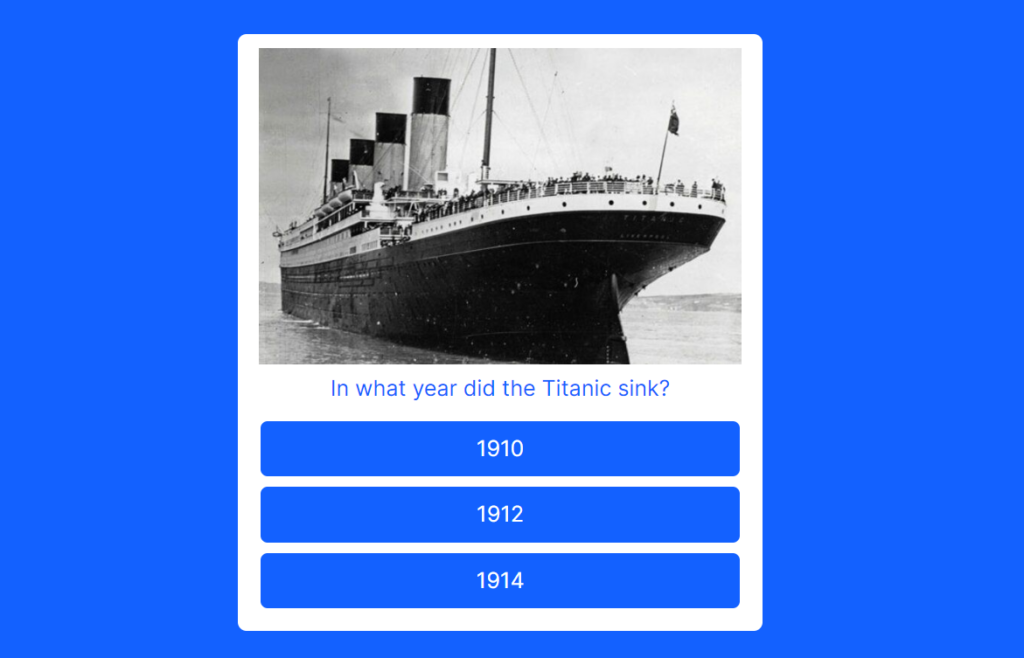
Another cool thing you can do is make educational videos interactive by setting questions during or after a video.

Whether you want to educate employees with work trivia games, learn how to build your trivia quiz or find a perfect trivia game maker for your needs, we have a guide for you!
3. Jeopardy
Adact’s Jeopardy is an ode to one of the most-recognized trivia games. You can include different topics and questions in the game and assign different points to each question. Besides, you have total control over the customization of topics. It is a great way to challenge students and offer awards to the ones with the most points.
Related: How to create your own Jeopardy

4. Wordle
Adact’s word-guessing game allows you to ask questions and let players guess the correct word. The custom wordle game is simple to set up, yet highly engaging and helpful for learners to remember complicated terms.

5. Memory game
In Adact’s memory games, players try to find the matching pairs before the timer runs out. You can upload the images and set the pairs. The faster players finish the puzzle, the higher score they get. The game is competitive and focuses on developing an attention span and memory.
Related: How to create a matching game
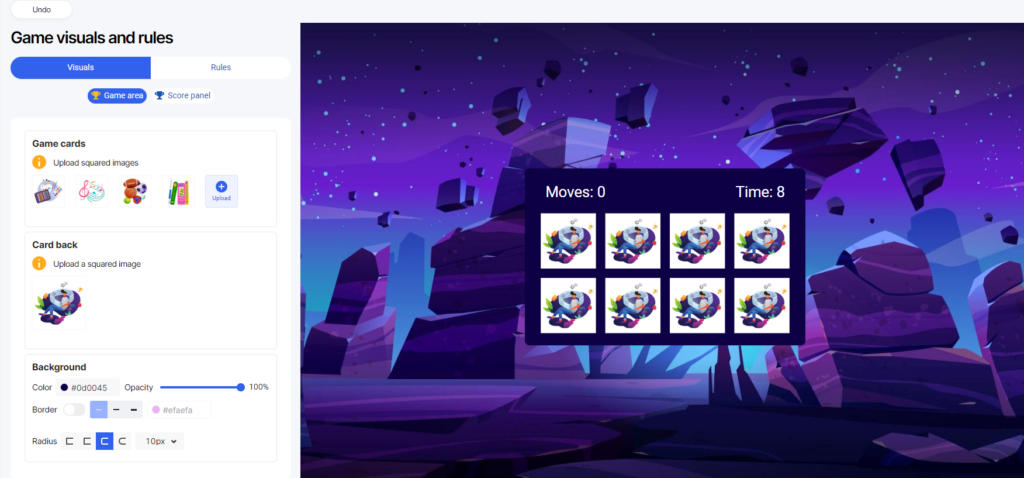
Conclusion
The success of gamification is unquestionable, with a great impact that has been going on for a while now. It has entered our daily lives, revolutionizing the way we work, play, eat, shop, and learn. How the future of gamification in education will look like?
With the pace at which gamification is evolving, we may expect gamified learning to replace traditional learning in the near future.
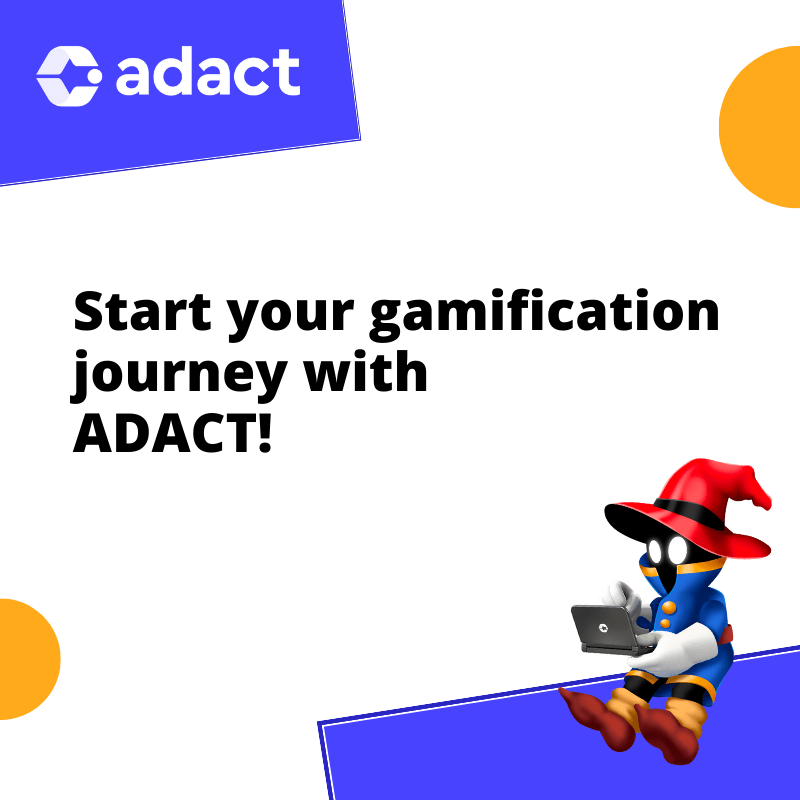
Book a Demo
In the meeting, we will take a look at ADACT, discuss different game ideas and how gamification can help reach your marketing goals.
Gamification in education: FAQs
Gamification in education involves using game mechanisms to boost learning. You can increase student engagement, retention and motivation with game-based aspects like points, badges, levels, rewards and leaderboards.
Duolingo is a fantastic example of gamification in education. It is a language-learning platform that uses game elements such as points, levels and competition to motivate learners.
Google’s Read-Along app is another example that uses points and badges to engage young readers.
Game-based learning is highly effective. It improves cognitive, motivational and emotional aspects of learning. Research shows that students playing educational and learning games experience better problem-solving and are more motivated to learn. However, you still need to remember that the overall effect of game-based learning directly depends on factors like the game’s quality, properly established learning objectives and the level of support educators provide.
To gamify online learning, follow these steps:
1. Establish clear learning objectives and choose the appropriate game mechanism
2. Incorporate game-based aspects like points, badges and rewards
3. Adopt leaderboards to encourage competition
4. Design quests and challenges that urge students to use their knowledge
5. Incorporate different difficulty levels
6. Embed team-based activity to promote collaboration
7. Make the overall learning experience visually appealing
Gamification motivates students because it taps into intrinsic and extrinsic motivation. The first one is the internal drive to achieve personal goals. The second one is about external recognition and rewards. Gamification elements address both types of motivation. Besides, games make the overall learning curve more engaging and enjoyable. Learning is always easier when a person enjoys the process and has a positive attitude toward it.
Originally published on March 8, 2022, updated on February 17, 2023.
